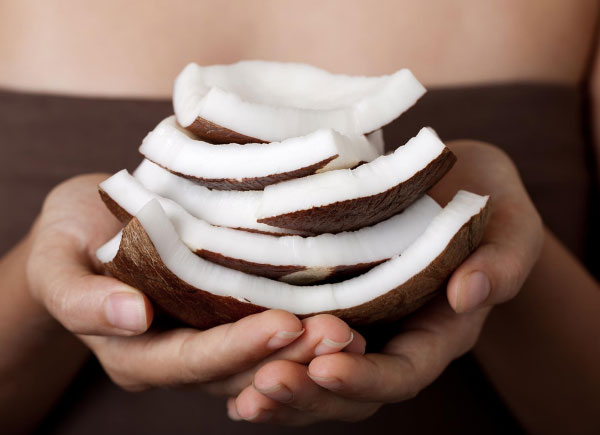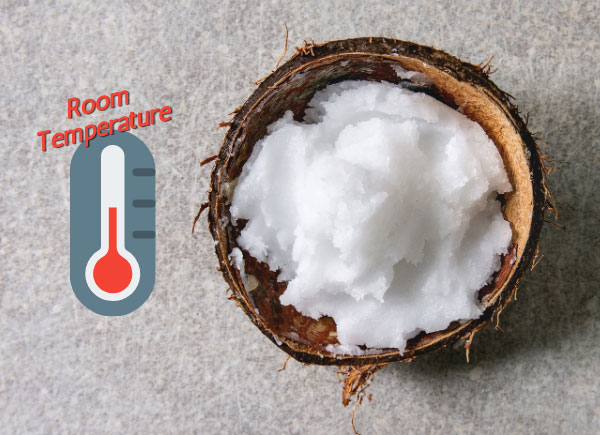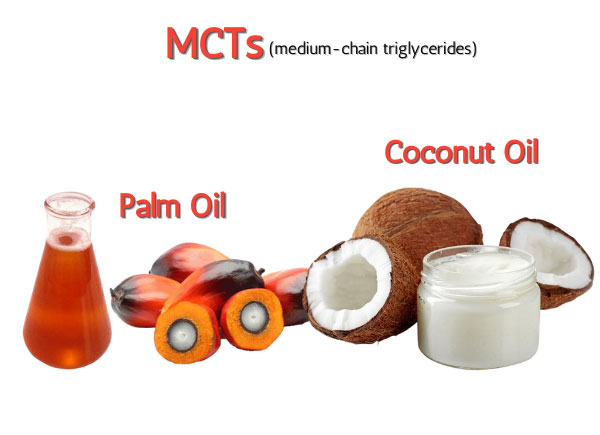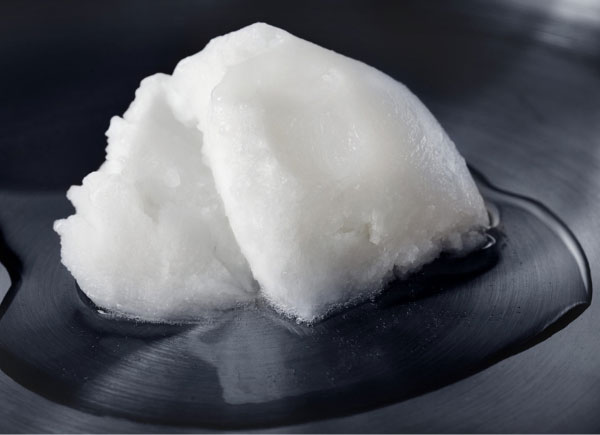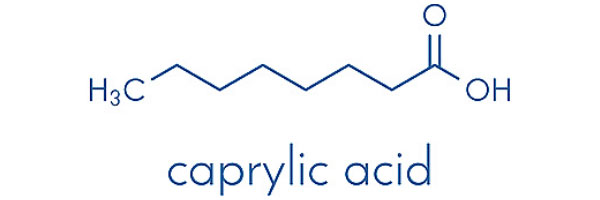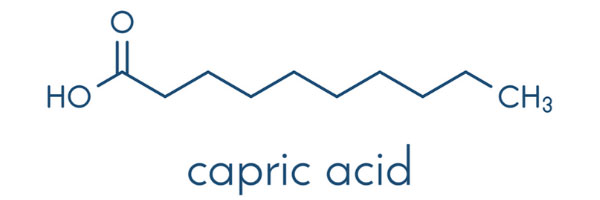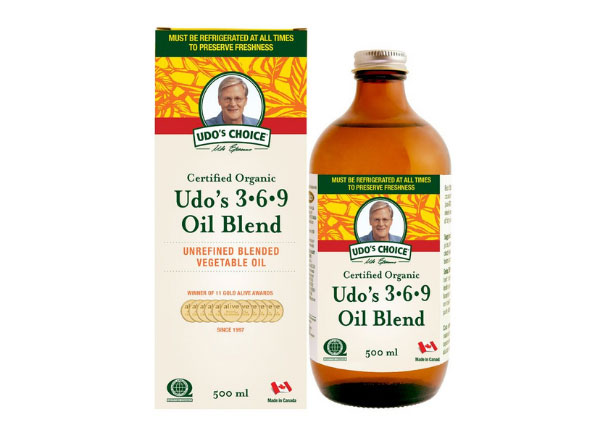Today you’ll discover everything you need to know about Coconut vs MCT oil.
I’ve received a lot of questions about it and mainly, people are confused. And I totally agree and understand.
So I’ve simplified the information, so it’s easy to digest and apply.
Now, I’ve been taking coconut and MCT oil for over 35 years. WAY before it became cool or popular.
Initially, it was about gaining muscle and losing fat at the same time. Then it was for both gut and brain health.
I’ll talk about all of this today and more specifically:
- What are Coconut and MCT oils?
- What are the differences?
- Which are the best forms and what to avoid?
- How to best use each one and when
What Is Coconut Oil
Coconut oil is the oil extracted from the kernel of the coconut.
It’s fat, not protein or carbohydrate.
Coconut oil contains more than 50% of its fat being different types of MCTs
Coconut oil is primarily saturated fat. This is why it’s solid at room temperature, while non-saturated fats such as olive oil are liquid.
However, Coconut oil contains no trans fats or cholesterol… unlike other saturated fats.
This is why many people consider coconut oil to be healthy fat.
So, it’s different from other saturated fats found in animal proteins — such as eggs for example — which do contain cholesterol.
By the way, this does NOT mean that dietary saturated fats or cholesterol is bad for you. I’ve done articles about this topic in the past.
So, I won’t cover it today.
Some of the benefits of coconut oil are that it’s antimicrobial, antiviral, and antibacterial. Which means it has properties for:
- Killing harmful bacteria and other pathogens 1
- Increasing your “good” HDL cholesterol and lipoprotein 2
- It can help you lose fat, especially around your waistline 3
- Promoting skin health when used topically 4
In fact, this was the original reason I took coconut oil over 35 years ago.
I had bacterial problems in my gut and I started taking
- Probiotics
- Prebiotics
- Coconut oil
What Is MCT Oil?
MCT stands for “medium-chain triglycerides”.
There are four types of MCTs:
- caproic acid (C6)
- caprylic acid (C8)
- capric acid (C10)
- lauric acid (C12)
I’ll talk about the benefits, pros, and cons of each and which ones I avoid and those that I take and for what reason… in just a minute.
MCTs are found in coconut oil as stated earlier, but also Palm oil.
Something to note is that almost all the fats you consume and hear about, such as Olive oil, nuts, avocados, animal fats, and so forth are “long-chain triglycerides”.
While MCT is a medium-chain.
What does this mean?
What separates MCTs from other types of fats is in how they’re processed by the body—they’re not absorbed in the same exact fashion as other fat sources.
MCTs are directly shuttled to the liver to rapidly be used for energy both in the form of fat and ketones.
MCTs can directly enter the mitochondria, the cell’s powerhouse, and help it produce energy.
So to really simplify all of this, MCTs are fats that get used for faster energy like carbohydrates.
Thus, they also have less of a chance to get stored as body fat, when compared to regular long-chain fats such as olive oil and other fats.
MCTs also help with brain and cognitive functions such as Alzheimer’s disease, because of the ketones and the improvement in blood sugar.5
What Are The Main Differences?
- MCT is a more refined version or more of an “extract” of Coconut oil.
- MCT is only a medium-chain triglyceride, while Coconut oil is BOTH medium and long.
- MCT is liquid at room temperature, while Coconut is solid.
- You can cook with coconut oil, but I suggest you shouldn’t with MCT… even though some people do.
- MCT is better for energy and brain health, while Coconut is better for gut health.
- Coconut oil contains mainly lauric acid (C12) MCT, while you can get specific versions of MCT – such as caprylic acid (C8), which is what I take. More on this in a minute.
WHAT Is The Best FORM Of Coconut Oil
If you’re going to cook with coconut oil, then it’s better to go with REFINED because it has a higher heating point of 400 degrees Fahrenheit.
While UNREFINED, VIRGIN is good up to 350 degrees.
If you’re going to eat it raw, the unrefined/Virgin has a more coconut and richer taste. The refined has less scent and flavor.
WHEN Is The Best TIME To Use Coconut Oil?
It doesn’t matter, there is no best time.
HOW Should You Best Use Coconut Oil?
You can eat it raw or cook with it – up to you.
WHAT Is The Best FORM Of MCT Oil?
As stated earlier there are 4 kinds of MCT oils. I’ll tell you my favorite in a minute.
caproic acid (C6) – this is the shortest MCT with 6 carbons. It does convert to ketones quickly, but it’s bitter and causes stomach problems, gas and diarrhea.
caprylic acid (C8) – is a little longer, with 8 carbons. It converts to ketones the fastest, so it’s good for energy, brain health, decreasing appetite, sugar cravings, and fat burning.
Keep in mind that regular coconut oil is only about 3% C8.
capric acid (C10) – is even longer, with 10 carbons. Not much research on this as far as benefits, other than it might boost your immune system and decrease fungus. It does cause stomach issues. It’s cheaper to produce than C8.
lauric acid (C12) – this is the longest MCT with 12 carbons. I actually consider this more of a LONG chain, rather than a medium-chain. It’s the least effective for ketones, but more effective for antimicrobial and antibacterial.
Now, I personally only use the Caprylic Acid C8. It has the most MCT benefits and the least stomach issues.
But, make sure to search out specific MCT with ONLY Caprylic Acid C8.
Most MCT oils use a combination to save money. Most of it is C10 and C12.
I prefer products with glass bottles instead of plastic for oils.
WHEN Is The Best TIME To Use MCT Oil?
I use it first thing in the morning and also before my workout and sometimes before bed.
I only use 1 teaspoon at a time. That’s all you need in my opinion. Too much will cause stomach issues.
HOW Should You Best Use MCT Oil
I do use it for more of an energy source. Even though, I personally don’t feel anything.
I mean, I’ll be honest with you … I’ll take Body Brain Energy in the morning and holy crap, I’m flying high all day long.
I’m super focused, crazy amounts of energy, no jitters, no rapid heart rate, it contains nootropics, it dramatically improves your mitochondria, it’s good for your body, muscles, and brain.
Contains only 10 mg of natural caffeine from organic green tea extract and it does NOT affect my sleep.
I love it for energy, brain health, muscle stamina, and all-around anti-aging benefits.
However, I still take MCT oil for some of the ketone benefits.
And in all honesty, it’s just more for insurance reasons.
Summary
So now you know the differences between Coconut oil and MCT oil. The pros and cons of each. How to best use each one and the best forms.
These days, I probably only take 1 teaspoon of MCT C8 in the morning or before my workout for the ketones and brain health.
I only use about ½ of a tablespoon of coconut for the antimicrobial, antiviral, and antibacterial benefits for better gut health. Along with my pre and probiotics.
Altogether, I’m taking in about 100 calories from Coconut and MCT oil.
It’s not much. As I said, I don’t really feel it and if I take too much MCT, it causes me stomach problems.
For energy, I just take Body-Brain Energy.
I also take about 1 tablespoon of Udo’s Oil, Extra Virgin Olive Oil, and Fish oil daily. So, that’s about another 400 fat calories.
Then there’s the fat found in my proteins and some other foods.
So, I estimate about 25%-30% of my diet is from fat.
And the remaining 70% is about 50/50 protein and carbs.
Hence, I’m more of an iso-caloric diet. Or in the old days, a zone-diet.
About ⅓ of my calories are from each of the 3 macronutrients. — proteins, carbs, and fats.
The ratios do change on different days, workout vs non-workout.
Anyway, I’ve got some very important information and links on what we spoke about today and how to improve your energy levels, brain health, and muscle stamina.
Please visit them as it pertains to today’s topic and in helping you achieve your health, fitness, and longevity goals … in the least amount of time, effort, and money … and most importantly, have fun in the process.
- https://www.ncbi.nlm.nih.gov/pmc/articles/PMC444260
- https://www.ncbi.nlm.nih.gov/pubmed/19437058
- https://www.ncbi.nlm.nih.gov/pubmed/25636220
- https://www.ncbi.nlm.nih.gov/pubmed/15724344
- https://pubmed.ncbi.nlm.nih.gov/30367958/
